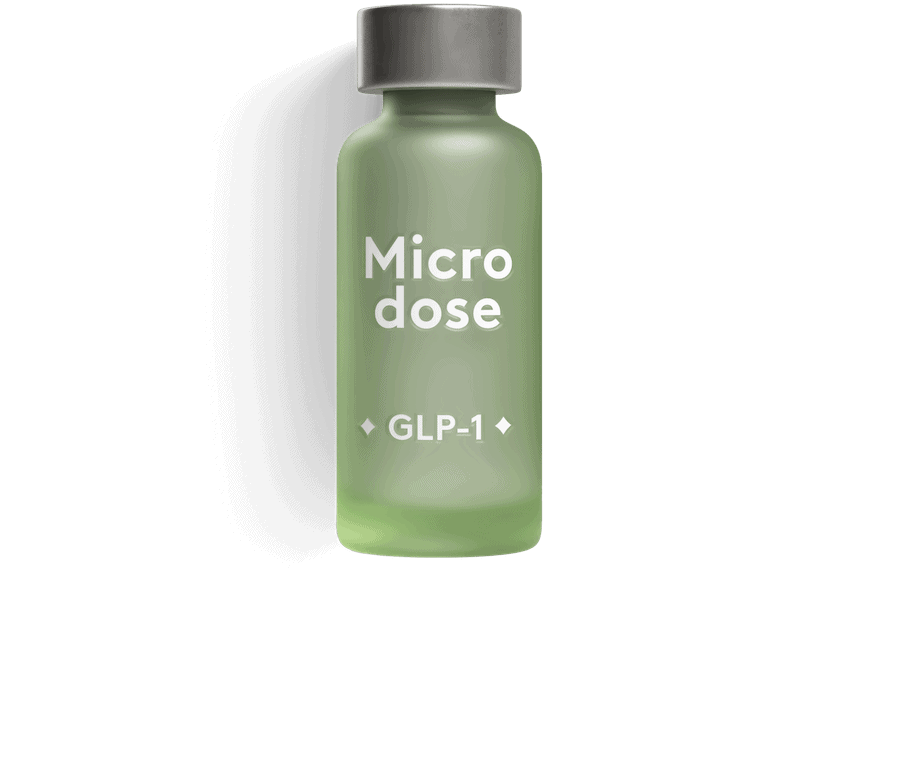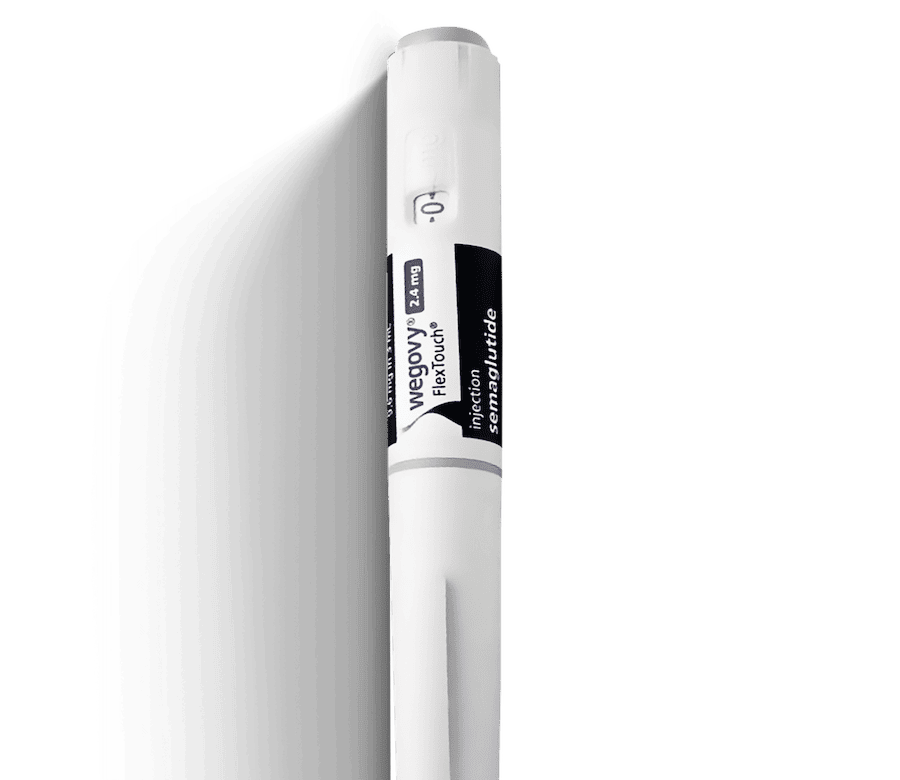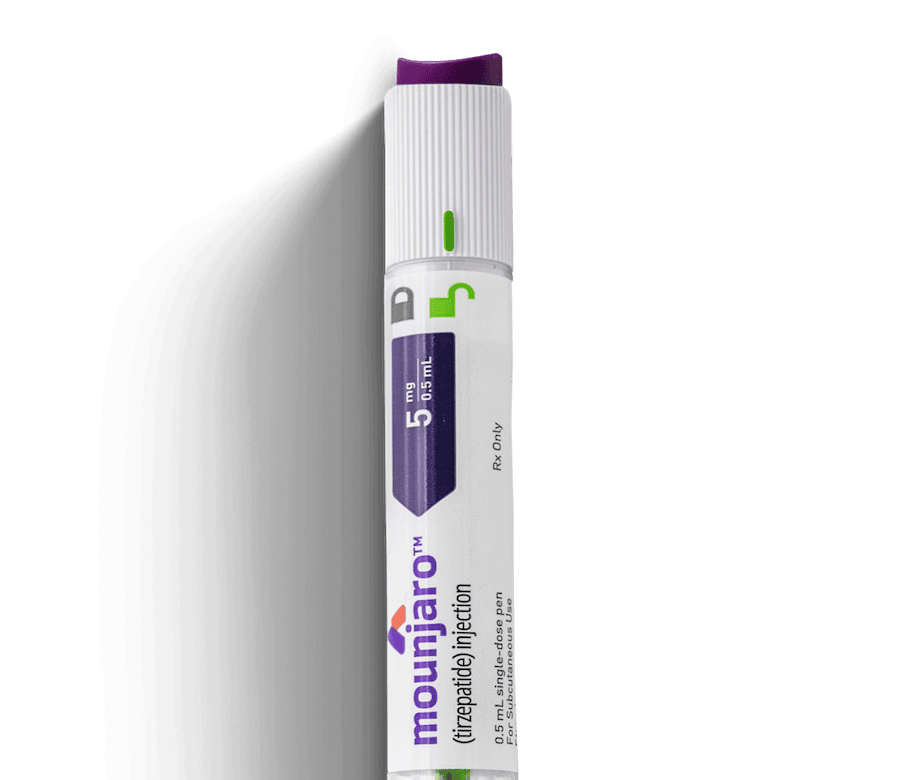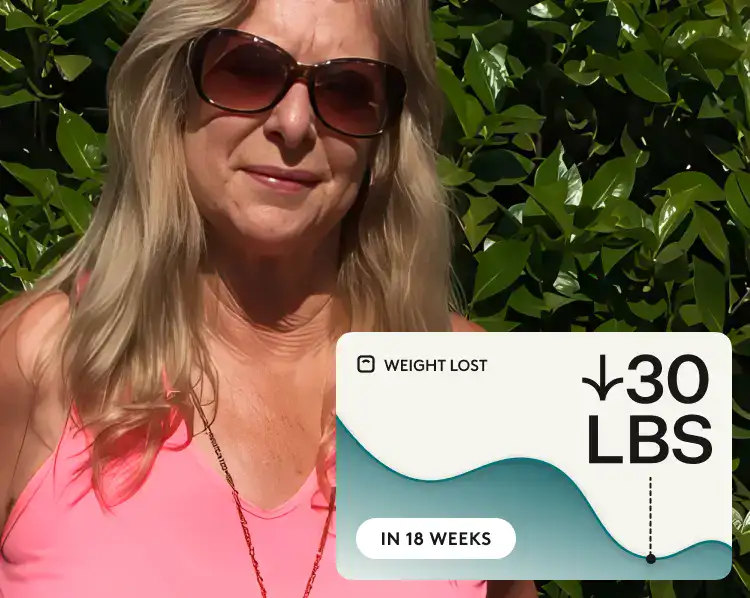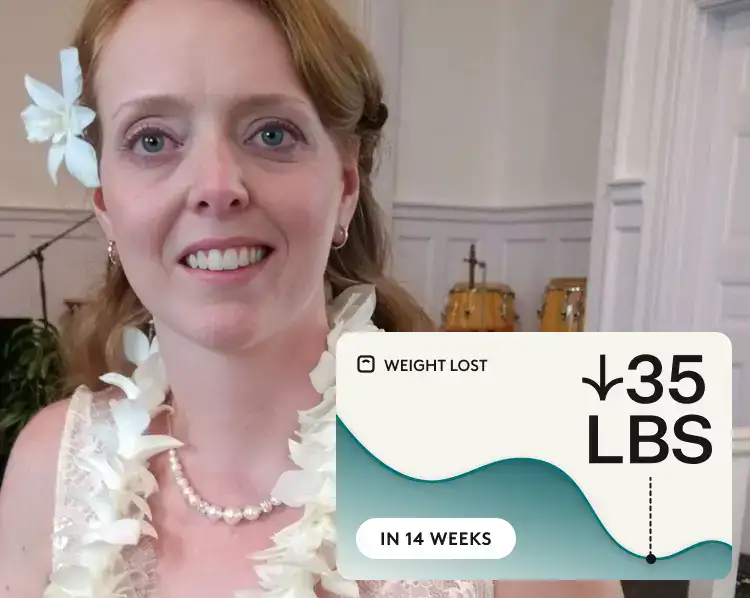What you’ll learn:
- Saunas can make the scale drop temporarily, but the change comes from water loss, not fat loss.
- The calorie burn from a sauna session is modest and similar to light activity, so it won’t replace exercise or dietary changes for weight loss.
- Saunas are best viewed as a relaxation and recovery tool that can support overall well-being, not as a standalone weight loss strategy.
From weight loss teas to cold plunges, wellness trends have a way of cycling through our feeds every new year. Lately, saunas have stepped into the spotlight as a supposed shortcut to weight loss. The promise is tempting—sweat it out, drop pounds, and skip the treadmill. But as with many viral claims, the story is a bit more complicated.
According to Dr. Karen Mann, MD, Noom’s Medical Director, it’s understandable why this trend catches attention. “People naturally gravitate toward methods that sound efficient or relaxing, especially when they don’t require drastic changes to diet or activity,” she explains. “But it’s important to separate what saunas actually do for the body from what’s being overstated online.”
So, can regular sauna sessions really make a difference for your weight goals? Let’s dive into what actually happens to your body during heat exposure and explore the science behind viral sauna claims.
What is a sauna?
A sauna is a small, enclosed room or structure designed to promote intense sweating through heat exposure, typically ranging from 150°F to 195°F (65°C to 90°C). Traditional saunas use dry heat, often produced by wood-burning or electric stoves that warm stones; water may be poured over the stones to create brief bursts of steam and humidity. Modern versions, like infrared saunas, use light-based heat to warm the body directly rather than the surrounding air.
People use saunas for relaxation, muscle recovery, improved circulation, and stress relief. Sessions usually last between 10 and 20 minutes, followed by a cool-down period—sometimes including a cold shower, plunge, or rest. While the immediate effects include sweating and temporary water weight loss, regular sauna bathing is also linked to potential cardiovascular and mood benefits when practiced safely and consistently.
Sauna bathing isn’t a new wellness trend; it’s a practice that’s been around for thousands of years. Rooted in Finnish tradition, saunas were originally used for relaxation, cleansing, and social connection. Over time, this spread around the world and evolved into modern forms of heat therapy now found in homes, gyms, and health spas.
Why do people think saunas can help with weight loss?
“The idea behind sauna-based weight loss stems from how the body reacts to heat,” explains Dr. Mann. When you sit in a hot sauna, your body naturally starts to cool itself down in an attempt to maintain a stable body temperature.
In an attempt to cool down your body, you’ll experience several things:
- Your heart rate increases
- Your blood vessels expand to move heat toward the skin’s surface
- Your sweat glands release water to help you cool down.
This sets off different parts of your body to work together—like your nerves and hormones—to handle stress and manage energy.
Experts describe it as a short burst of “good stress” that can help your body adapt and get stronger. Similar to what happens during exercise, a bit of heat stress can kick your cells into repair mode. That extra effort to stay cool takes energy, which is why some believe that sauna time could help burn a few more calories and support weight goals over time.
Why is using saunas for weight loss popular?
It’s easy to see why sauna use has become one of the buzziest “wellness hacks” in recent years, offering a mix of relaxation, detox appeal, and the promise of effortless calorie burn. Several factors explain why this trend keeps heating up:
- Immediate visible results: Research shows some people can lose up to 1.4 pounds after four 10-minute sauna sessions. Of course, this instant drop on the scale is from water weight, and you’ll gain it right back with a couple of glasses of water.
- Low-effort appeal: The same study showed that those four 10-minute sauna sessions burned 73 to 134 calories and mimicked light exercise. But these results were based on larger, less active men, so the calorie burn for smaller or more active people would likely be lower. And again, the calorie burn comes mostly from cardiovascular strain and fluid loss, not true fat oxidation. Again, what’s lost is mostly water weight that’s quickly regained once you rehydrate.
- Celebrity and influencer buzz: Sauna culture has become popular online. By 2025, the hashtag #sauna has reached almost 500,000 posts on TikTok, filled with wellness influencers and even celebrities posting sauna spa sessions or installing luxury saunas at their homes.
- Wellness travel surge: Saunas are thriving as part of the broader wellness tourism boom. Travelers are increasingly seeking spa-centered getaways, and resorts are responding with immersive experiences like Nordic sauna circuits and infrared therapy rooms. According to trend insights, the North American sauna market generated about $250.8 million in revenue in 2024, highlighting the rising interest in this form of luxury self-care.
“Trends like this often take off because they sound easy,” says Dr. Mann. “You sit, you sweat, and it feels productive. But the motivation people find in that quick progress is best used to kick-start lasting habits, not replace them.”
Rx weight loss, the right way, with Noom
Get access to prescription weight loss medication with Noom.Do saunas help people lose weight?
Saunas definitely make you sweat, but that doesn’t necessarily mean you’re burning fat. While it’s true that spending time in a sauna can make the number on the scale drop, that shift doesn’t reflect actual fat loss.
Here’s what the science actually says:
- Water weight, not fat loss: Most of the “weight loss” you see after a sauna session comes from water weight. Research shows it’s common to lose around 1% of your body weight during a 30-minute session, but that’s quickly regained once you rehydrate (which you should). It’s a short-term effect, not fat loss.
- Minimal calorie burn: Saunas do raise your heart rate and energy use a bit, but the calorie burn is modest. In the study mentioned earlier, men with higher BMIs burned about 73 calories during the first 10-minute sauna session and up to 134 calories by the fourth session. It’s a small boost, roughly similar to the energy you’d use during a light walk.
- No fat-burning mechanism: Heat alone doesn’t activate fat metabolism or create the caloric deficit required for weight loss. Without a change in diet or activity level, using a sauna won’t lead to lasting fat reduction.
To sum it up: no, saunas don’t cause meaningful or lasting weight loss, and there isn’t enough scientific evidence to support claims that they “melt fat” or dramatically boost metabolism. While using saunas can have wellness perks like better circulation, relaxation, and stress relief, the idea that it replaces exercise or diet just doesn’t hold up under research.
The health benefits of saunas
Even though saunas aren’t proven to help with weight loss, smaller studies suggest they may still offer some extra wellness perks. Regular use has been linked to benefits like better heart health, improved mood, and healthier skin, though these findings come from limited research and need more study to be confirmed.
- Better circulation and heart health: Heat exposure makes your blood vessels expand, helping more oxygen flow through your body. Over time, this may help lower blood pressure and support cardiovascular health.
- Stress and mood balance: Spending time in a sauna can help lower cortisol levels and boost your mood, leaving you feeling calmer and more relaxed.
- Skin health and protection: Regular sauna use may help strengthen your skin’s natural barrier and improve moisture balance.
- Immune system support: Some evidence suggests that sauna bathing can help support immune defenses over time.
So while the sauna itself won’t directly burn fat, it’s still a powerful tool for supporting a balanced, healthy lifestyle.
What’s the optimal time to stay in a sauna for the most benefits
Overall, research points to a sweet spot of about three to seven sessions per week for roughly 15 to 20 minutes each to get the most balanced benefits—helping with relaxation, blood flow, and overall well-being.
The basic types of saunas
Saunas come in a few main forms, each using heat a little differently. Here’s a quick overview of the most common types you may find:
- Traditional Finnish sauna: The classic dry sauna most people think of. It uses a wood, electric, or gas heater to warm the air, typically reaching 175°F to 212°F (80°C to 100°C) with low humidity (10–20%). You can often pour water over heated rocks to create short bursts of steam that raise humidity for a few moments. Sessions usually last 5 to 20 minutes, followed by a cool-down period.
- Infrared sauna: Instead of heating the air, this type uses infrared lamps to warm your body directly. Temperatures are lower—around 113°F to 140°F (45°C to 60°C)—but still promote deep sweating. Some people may find this type of heat more comfortable and easier to tolerate.
- Steam room (Turkish or Hammam style): Also called a “wet sauna,” this version uses moist heat from a steam generator. The temperature is lower, typically around 110°F (43°C), but humidity hovers near 100%, making it feel much hotter. Steam rooms are often used to ease congestion and support respiratory health, and the dense humidity can feel soothing to the skin.
Sauna-inspired wellness trends
While traditional saunas remain the classic go-to, a wave of modern, sauna-inspired trends has popped up in gyms, wellness spas, and social media feeds. These new options make heat therapy more accessible, but they can also carry some risks if used incorrectly.
Here are a few examples gaining attention:
- Sauna suits: These heat-trapping workout outfits are designed to make you sweat more during exercise. While a study found that wearing one can slightly boost cardiovascular fitness and support modest reductions in body fat when used under controlled conditions, the effects come mainly from water loss, not true fat burn. Overuse without proper hydration can also increase the risk of overheating or dehydration.
- Cold plunge pairings: Alternating between a sauna session and an ice bath—a practice known as contrast therapy—has become a popular recovery ritual among athletes and wellness enthusiasts. Research shows that switching between heat and cold may help reduce muscle soreness and improve circulation, while another study suggests it can enhance recovery after intense exercise. However, experts note that results vary, and benefits are often temporary or modest, depending on factors like timing, temperature, and overall fitness level.
- Infrared sauna blankets: These zip-up, at-home blankets use infrared heat panels to promote sweating while you relax. They’ve become a social media favorite for their convenience, but safety concerns are worth noting. The U.S. Consumer Product Safety Commission (CPSC) has recalled certain models due to fire and burn hazards, so it’s important to verify product safety and follow manufacturer guidelines before using one.
- Salt and herbal saunas: These saunas feature Himalayan salt walls or salt-infused air, drawing inspiration from halotherapy (salt therapy). They’re often used for relaxation and to support clearer breathing, and some studies suggest potential benefits for respiratory comfort. However, research remains limited—most evidence is anecdotal, and more large-scale studies are needed to confirm long-term health effects.
These trends show how people are finding creative ways to bring heat therapy into daily life. Still, it’s important to approach them with care. Start slow, listen to your body, and treat these tools as part of a balanced wellness plan rather than a shortcut to results.
Are saunas safe?
For most healthy adults, sauna bathing is safe and even beneficial when practiced with moderation and mindfulness. But because it exposes the body to intense heat, it’s important to understand the limits.
Dehydration risks
Sweating is the body’s built-in cooling system, but it comes at the cost of water and electrolytes. Studies show you can lose around 1% of your body weight in fluid in an hour in a sauna, and even mild dehydration can cause dizziness, fatigue, or headache. Always drink water before and after your session.
If you feel lightheaded, stop sweating suddenly, or start to feel unwell, it’s time to step out and cool down. Also, always skip alcohol before or after sauna use—it makes dehydration worse and interferes with your body’s ability to regulate temperature.
Cardiovascular considerations
Heat exposure from saunas increases both heart rate and blood flow, which feels similar to light exercise. For most people, that’s safe, and studies even show sauna use may improve circulation and can temporarily support healthier blood pressure when combined with exercise. But if you have heart disease, angina, uncontrolled hypertension, or rhythm disorders, talk with your doctor first.
Some people with heart issues can safely use saunas under medical supervision, but sudden temperature changes (like going from hot to cold water) can trigger blood pressure fluctuations. Listen to your body, pace yourself, and always check with your healthcare provider if you’re unsure.
Other health conditions
- Pregnant people are advised to avoid saunas because high body temperatures may pose a risk to fetal development.
- People with multiple sclerosis or seizure disorders should also steer clear of heat exposure.
- Anyone using sedating medications should skip the sauna since they can impair your body’s response to heat and increase the risk of fainting or heat stroke.
Sauna use and weight loss: Frequently asked questions (FAQs)
Saunas spark a lot of curiosity, especially when it comes to weight loss claims. To separate fact from hype, let’s look at some frequently asked questions about how saunas affect your body, your weight, and your overall health.
How much weight can you lose in a sauna in one hour?
You might see the scale dip a little after an hour in a sauna, but that loss comes from water weight, not fat. In one study of trained athletes, participants completed three 20-minute sauna sessions at 158°F with short breaks in between. On average, men lost about 1.8% and women about 1.4% of their body weight—all from dehydration.
Is an infrared sauna good for weight loss?
Infrared saunas can feel more comfortable because they operate at lower temperatures (around 113–140°F) while still making you sweat. You might burn a small number of calories and lose some water weight during a session, but research hasn’t shown any meaningful fat loss from infrared heat alone.
Is a sauna or a steam room better for weight loss?
Neither has a proven edge when it comes to actual fat loss. Both can make you sweat and cause short-term water weight changes, but these aren’t tools for weight loss.
Should you use a sauna before or after a workout?
Using the sauna after your workout appears to be more beneficial than using it beforehand. One study found that adding a post-exercise sauna session three times per week for eight weeks improved cardiovascular fitness and lowered blood pressure compared to exercise alone. Another study showed that using an infrared sauna after resistance training reduced muscle soreness and improved neuromuscular performance compared to passive rest.
What is a sauna suit?
A sauna suit is a non-breathable outfit (usually made of rubber or PVC) that traps heat and makes you sweat heavily. Athletes once used them to “cut weight” quickly before competitions, but this loss comes entirely from water, not fat. Because they prevent your body from cooling properly, sauna suits carry serious risks like overheating and dehydration.
A sauna suit can make exercise feel harder and burn a few more calories. Research shows it adds about 30 to 40 extra calories and roughly 1 to 1.4 pounds of water loss during a cycling session. It’s a small bump in effort, not a weight loss shortcut, and is mainly because of dehydration.
Sauna suits don’t increase fat loss. Even athletes who use them for rapid water-weight cuts do so under strict supervision. For general wellness, it’s best to avoid them altogether.
Can a sauna help you lose weight long-term?
Not on its own. Again, saunas can burn a few extra calories and support recovery or stress relief, but no strong research shows they cause lasting fat loss. They work best as a complement to healthy habits like balanced nutrition, movement, and sleep, not as a substitute for them. For realistic, science-based weight loss advice, explore our guide on sustainable weight loss strategies and everyday habits that actually work.
The bottom line: Saunas aren’t a weight loss shortcut, but do have benefits
Saunas might make the number on the scale drop temporarily, but that change comes from water loss, not fat reduction. While the heat slightly boosts your heart rate and energy use, there’s no scientific evidence that it can lead to lasting weight change. The real value of sauna use is in how it helps you unwind, recover, and feel recharged.
As Dr. Mann explains, “Saunas have their place. When used safely, they can complement a healthy lifestyle by promoting relaxation, circulation, and recovery.” The key is moderation and balance. Building healthy habits like eating well and keeping up with regular activity will do far more for your long-term goals than relying on heat alone.
At Noom, we focus on helping you make realistic changes that last. Our behavior-based program combines nutrition, movement, and mindset coaching to support lasting progress. If you enjoy using saunas, they can be part of that bigger routine—just one of many ways to care for your body while working toward healthy, sustainable weight loss.
Why you can trust us
At Noom, we’re committed to providing health information that’s grounded in reliable science and expert review. Our content is created with the support of qualified professionals and based on well-established research from trusted medical and scientific organizations. Learn more about the experts behind our content on our Health Expert Team page.



